Current Work
Luckbarrow
At Luckbarrow, West Luccombe our team cares for a collection of Sorbus (Whitebeam) trees. This collection includes all the rare British species. Regular working parties take place here.
Regular working parties take place here, usually on Tuesday mornings. In spring, there are thousands of daffodils later followed by bluebells. There is a small orchard area which the Society has replanted. A pond has been constructed and frogs, palmate newts, toads, dragonflies and damselflies, along with several other invertebrates now breed here. A butterfly garden bed is being planted up. Various nest boxes are in place to encourage birds and mammals. These are checked annually.
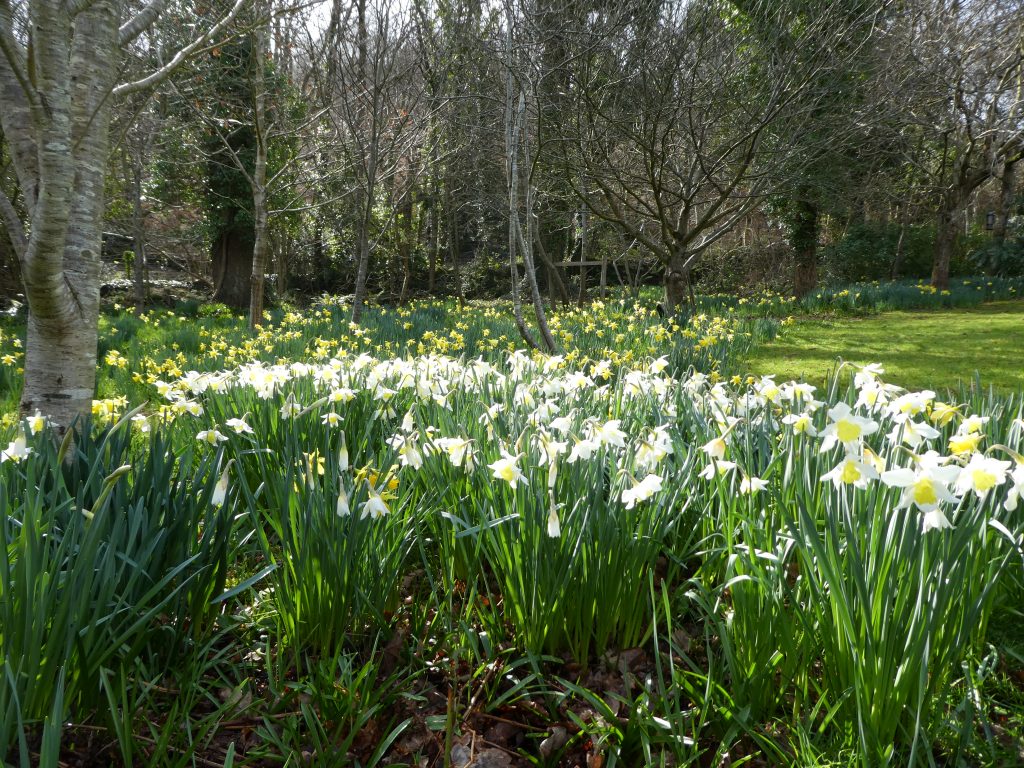
Daffoldils at Luckbarrow: Photo from Martina Slater ENHS’s Amphibian Recorder

Spring Bluebells at Luckbarrow: Photo from Martina Slater ENHS’s Amphibian Recorderphoto
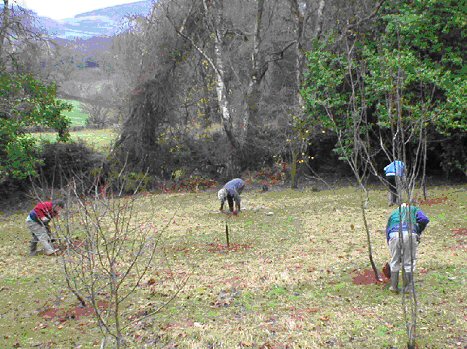
Nest Box Surveys, Birds
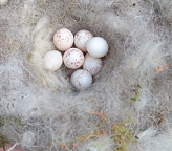
Great Tit nest made from sheep’s wool but sadly unsuccesful: Martina Slater with thanks.

Annual nest box checking and recording, conducted in September. Photo from Martina Slater with thanks.
ENHS Members set out on annual check of bird nest boxes.
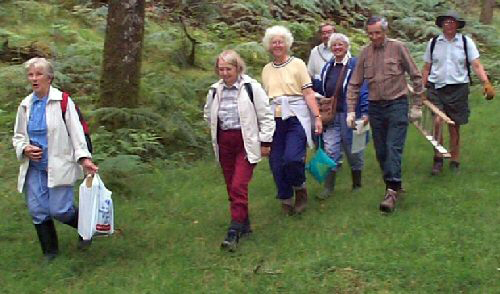
Since 1976 the Exmoor Natural History Society has maintained and monitored a number of nest boxes by arrangement with the landowners in various Exmoor locations as under:
| Horner Woods Complex | Cloutsham-Horner: 1976 – 1990 – c15 boxes. Pool Bridge: 1985 – 10 boxes. Currently 20 boxes. Prickslade Combe : 1990 – 11 boxes Currently 20 boxes Boys Path: 1990 – 6 boxes. Still current. Stoke Combe: 1990 – 11 boxes. Still current. |
| Malmsmead Field Centre | From 1978until 2008 when the centre closed, we monitored 6 bird boxes |
| Treborough Wood | Currently 18 boxes. |
| Pool Bridge | Currently 18 boxes. |
| Prickslade | Currently 18 boxes. |
| Farley Wood, Devon | Currently 20 boxes. |
| Hawkcombe Woods, Porlock | Currently 21 boxes. |
| Woodcock Gardens | 1990 – 12 boxes. Gradually increased to 38 currently. |
| Luckbarrow | Currently 10 boxes. |
| Stoke Combe | Currently 10 boxes. |
| Liscombe Wood, East Anstey, Devon | 24 boxes from 2021 |
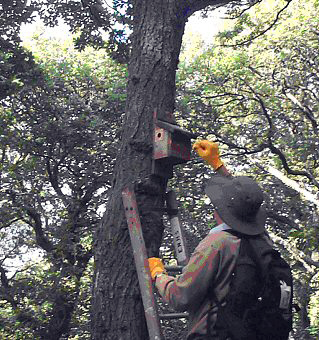
Most of the boxes are designed for hole nesting birds and are placed in woodlands which have been coppiced and are short of the nest-holes particularly sought by Pied Flycatchers, which have to compete with the many tits. To quote from member Jonathan White’s book Exmoor Birds (1994) “Before 1970 there were less than 30 pairs but with the introduction of nestboxes from the late 1970s onwards numbers have greatly increased. In 1990 148 boxes were up – 38 were successfully used by Pied Flycatchers.” For this reason, the Pied Flycatcher was chosen for the Society’s logo. There are also a few (seldom used) open fronted boxes, and one or two special boxes for owl, treecreeper, etc. The boxes are checked every autumn and the results computerised.
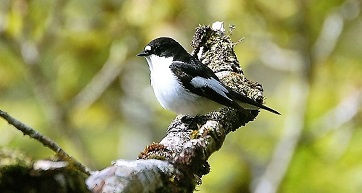
Pied Flycatcher, ENHS’s logo. Photo from Alastair Stevenson, ENHS’s Bird Recorder, with thanks.
Birds which have nested in our boxes are Pied Flycatchers, Nuthatches, Blue Tits, Great Tits, Coal Tits, Willow Tit (Once), Marsh Tit (Once), Redstart, Spotted Flycatcher, Tawny Owl.
Other creatures sometimes find the boxes useful and we have found the following inhabitants: Dormouse, Field Mouse, Bat, Bees, Wasps, Hornets.
Nest Box Surveys, Dormice
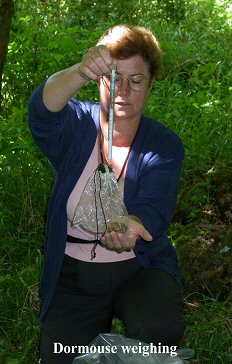
We also have a number of boxes, some of which are used by breeding dormice. These are monitored by members who have trained and obtained a Licence from English Nature. This is necessary as Dormice are a protected species. The results are fed into the National Dormouse Recording Scheme. Dormice are usually found in hazel coppice or hedgerows with hazel and bramble growing. Hazelnuts opened by dormice often indicate their presence.
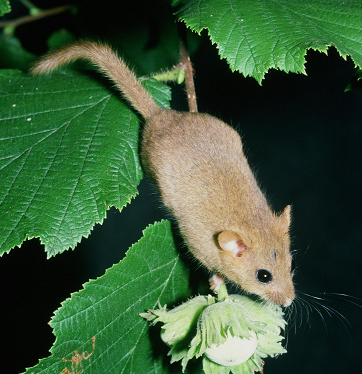
Dormouse enjoying hunting for nuts. This photo is credited to Pat Morris of the PTES with thanks. Getting pictures of dormice other than asleep in the hand are very difficult to get. Pat Morris is recognised as Mr. Dormouse one of the founders of the monitoring program and a fount of all knowledge about dormice.
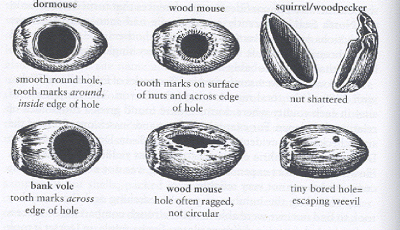
Pat Morris’s pencil drawings of nuts demonstrating the different teeth marks indicating which animal has been eating the nut. Kind permission of Pat Morris.
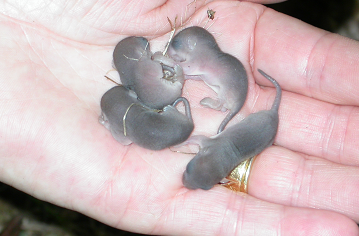
Baby Dormice: Photo courtesy of Brian Coulson, ENHS Vice Chairman. Mr and Mrs B Coulson are licensed Dormice Handlers.
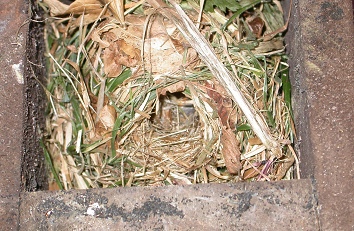
Dormice nest: Photo courtesy of Brian Coulson, ENHS Vice Chairman. Mr and Mrs B Coulson are licensed Dormice Handlers.
Nest Box Surveys, Bats
In 2021 James Windle was appointed our Bat Recorder and he carries out regular surveys of bats in one or two locations. We have tried a few bat boxes, so far without success. (Our only bat so far turned up in a bird box!).
Other Work
Although currently without an active Conservation Work Leader, many members of the Society are involved with a number of Conservation projects including the Plantlife National Plant Surveys, SWT Otter and Badger surveys, Butterfly and Bird surveys.
Recorders are kept busy on bird, fungi and lichen recording and botanists help with local surveys of orchards and rare plant species.
Past Work
Woodcock Gardens
For nearly 30 years, from 1990 to 2019, Exmoor Natural History Soc. Managed the 7.85 acres (3.18 ha) of land known as Woodcock Gardens on the lower slopes of Robin How, as a nature reserve, by agreement with the then landowner, Dr. D.C. Gibbs. The woodland section was tidied up, a pleasant walk with a number of benches created, nest boxes for birds and small mammals and bats put up and a former bracken-covered area was returned to grassland with wild flowers. Following the death of Dr. Gibbs, the land changed hands but ENHS still maintain the nest boxes with permission from the new owner.
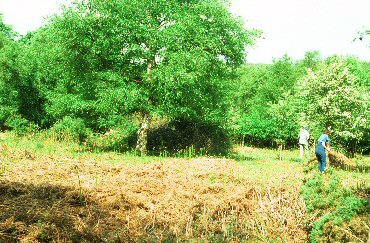
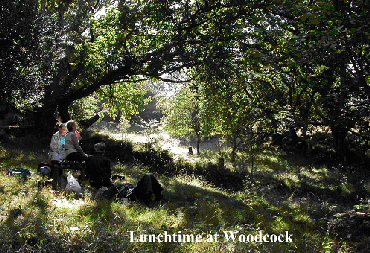
(A booklet available is available, see Publications section).
In 1982, a mile-long Nature Trail was created at Treborough Woods and maintained until 1998 when the area was closed to the general public.
The Trail is still used by children who visit Treborough Camp Site and ENHS also monitor a number of nest boxes here. Our picture shows the official opening by the Bishop of Bath and Wells.

Minehead Warren
From 1987 to 1994 ENHS did work at Minehead Warren to create a wildflower walk on a piece of waste ground leased to Minehead Town Council by Butlins Holiday Camp. Unfortunately, this had to be discontinued when the lease ran out and renewal was refused. The picture shows initial work in progress.
On several occasions we have acted to move plants threatened by road widening or forestry work e.g. hundreds of primroses were transplanted at Fair Cross on the Brendons, and primroses (pictured), moschatel and Early Purple Orchids moved back from edge of path to be widened in Tivington Woods.

Regular surveys of birds and flowers keep our records up to date and these are consulted by Planning Authorities via Somerset Environmental Records Centre and Exmoor National Park Authority. Yellowhammers, pictured, were surveyed in year 2000.
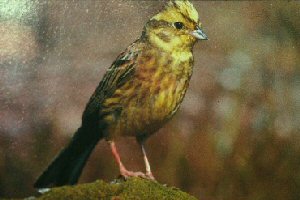
On many occasions we have been asked by Landowners, including the National Trust and Exmoor National Park to carry out a specific survey. We have done this at Ashton Brake, Glenthorne, Oare, Culbone Woods, Horner Woods, and many small plots of land.